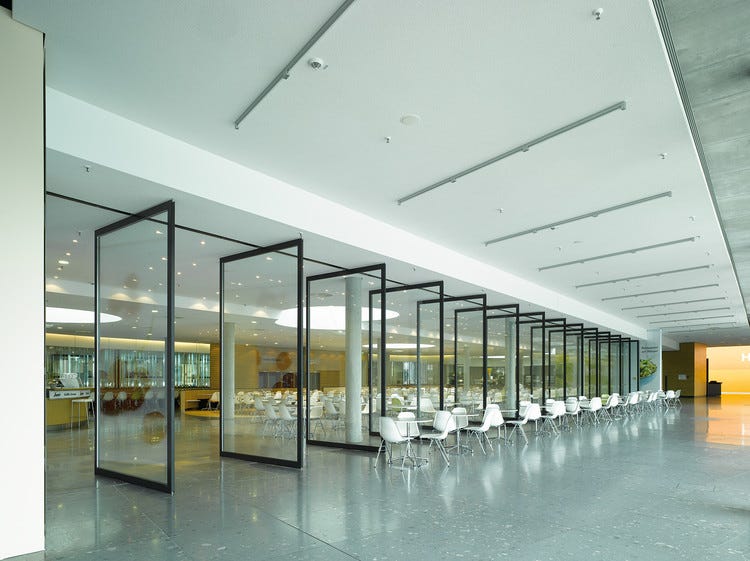In recent years, the construction industry has witnessed a significant shift towards innovative techniques aimed at improving efficiency, reducing project timelines, and ensuring higher safety standards. Among these techniques, off-site fabrication has emerged as a groundbreaking approach that has revolutionized the way construction projects are executed. As the name suggests, off-site fabrication refers to the process of manufacturing components away from the actual construction site, in a controlled environment, and then transporting these components to the site for assembly. This method not only streamlines the building process but also addresses numerous challenges commonly associated with traditional on-site construction.
This article delves into the concept of off-site fabrication, its advantages, applications across industries, and why it is considered the future of sustainable construction.
What is Off-Site Fabrication?
Off-site fabrication, also known as modular construction or prefabrication, involves producing components, modules, or entire structures in a specialized facility, away from the main construction site. These facilities are often equipped with advanced machinery and technology, which allows for greater precision and consistency in the manufacturing process. Once the components are completed, they are transported to the construction site, where they are quickly assembled, thus minimizing the need for extensive on-site labor and reducing construction time.
Off-site fabrication is not limited to just one approach; it encompasses various methods such as modular building, prefabricated structural components, and prefabricated mechanical, electrical, and plumbing (MEP) systems. These methods vary depending on the project requirements, but all share the common goal of improving efficiency, safety, and sustainability in construction.
Key Advantages of Off-Site Fabrication
The adoption of off-site fabrication offers numerous benefits that address many of the issues facing traditional construction practices. Below are some key advantages:
1. Enhanced Project Efficiency
Off-site fabrication allows for the simultaneous progression of on-site preparations and off-site manufacturing. While the foundation and infrastructure are being prepared on-site, the prefabricated components are manufactured, resulting in faster overall project completion. This parallel processing reduces project timelines, allowing developers to meet deadlines more effectively.
2. Cost Savings
By reducing the amount of on-site labor and minimizing material wastage, off-site fabrication can lead to significant cost savings. The controlled manufacturing environment allows for precise material usage, reducing the amount of excess that is typical of traditional construction methods. Additionally, faster project completion reduces labor costs and site overheads, making off-site fabrication an economically viable option.
3. Improved Quality and Consistency
Off-site fabrication facilities are equipped with advanced tools and machinery that ensure high levels of precision and consistency. Unlike on-site construction, which is subject to environmental factors, off-site manufacturing takes place in a controlled environment, minimizing the risks of errors and defects. This results in higher-quality construction components that meet industry standards and project specifications.
4. Enhanced Safety Standards
Construction sites are often hazardous, with numerous risks such as falls, accidents, and exposure to environmental elements. Off-site fabrication significantly reduces these risks by shifting a substantial portion of the work to a safer, controlled environment. Workers in prefabrication facilities operate in safer conditions, reducing the likelihood of accidents and improving overall safety standards within the industry.
5. Environmental Benefits
Off-site fabrication promotes sustainability by reducing waste, minimizing the carbon footprint, and allowing for better energy efficiency. Controlled facilities are better equipped to manage resources, reducing material waste, while the transportation of components requires less energy than the daily commuting of a large workforce to a construction site. Additionally, modular buildings created through off-site fabrication can be designed to be energy-efficient, contributing to sustainable construction goals.
Applications of Off-Site Fabrication
Off-site fabrication is not limited to a particular sector; it has versatile applications across various industries, including residential, commercial, industrial, and even healthcare and education sectors. Here are some of the common applications:
1. Residential Housing
Modular homes have gained popularity due to the speed and efficiency of off-site fabrication. Entire houses, including walls, roofs, and structural components, can be prefabricated and assembled on-site, drastically reducing construction time and costs. Prefabricated homes also offer the advantage of customization, allowing developers to meet diverse client preferences without extended project timelines.
2. Commercial Buildings
From office spaces to retail stores, off-site fabrication is extensively used in the commercial sector. Prefabricated components, such as walls, floors, and partitions, can be manufactured with precision and installed on-site with minimal disruption to surrounding areas. This approach is particularly beneficial in urban environments, where minimizing construction time and disturbances is crucial.
3. Industrial and Manufacturing Facilities
Industrial projects often require complex structures with specific design requirements. Off-site fabrication enables the efficient construction of specialized components such as pipelines, structural steel, and mechanical systems. Prefabricated components for industrial facilities are manufactured to meet industry standards, ensuring safety and functionality.
4. Healthcare Facilities
Healthcare facilities require stringent standards in construction to meet regulatory and patient care requirements. Off-site fabrication allows for the creation of highly controlled environments that meet these standards, such as patient rooms, operation theaters, and clean rooms. This method also speeds up the construction process, which is crucial for healthcare providers needing additional capacity quickly.
5. Education Buildings
Schools and universities can benefit from off-site fabrication, especially when faced with increasing demand for new classrooms or facilities. Prefabricated classrooms and other educational spaces can be installed quickly, minimizing disruption to the academic schedule. Moreover, off-site fabrication enables schools to expand infrastructure sustainably.
The Role of Technology in Off-Site Fabrication
The success of off-site fabrication largely depends on technological advancements that improve design, manufacturing, and assembly processes. Some of the key technologies driving off-site fabrication include:
1. Building Information Modeling (BIM)
BIM is a digital tool that allows architects, engineers, and construction professionals to collaborate on a virtual model of the project. This helps in precise planning and coordination, which is essential in off-site fabrication. BIM also reduces the risk of errors and improves communication, ensuring that all components fit seamlessly upon assembly on-site.
2. 3D Printing and Robotics
3D printing technology has opened up new possibilities in off-site fabrication, allowing for the creation of complex and customized components. Robotics, on the other hand, enhances the speed and accuracy of manufacturing processes, especially for repetitive tasks, leading to increased productivity and precision.
3. Advanced Material Science
Innovations in materials, such as high-strength concrete, lightweight steel, and sustainable composites, have made it possible to produce durable yet lightweight components for prefabrication. These materials contribute to the sustainability and longevity of prefabricated structures.
Challenges in Off-Site Fabrication
Despite its advantages, off-site fabrication does come with its own set of challenges:
-
Transportation and Logistics: Moving large prefabricated components to the construction site can be complex and costly, especially for remote or urban locations with limited access.
-
Design Limitations: While off-site fabrication allows for customization, it may still face limitations when compared to traditional construction in terms of unique or complex designs.
-
Initial Investment: Setting up a prefabrication facility requires a substantial initial investment, which may deter smaller contractors from adopting the method.
The Future of Off-Site Fabrication
As sustainability becomes a priority in the construction industry, off-site fabrication is likely to play an increasingly important role in the future of construction. The demand for faster, safer, and eco-friendly construction methods is expected to grow, driving further innovation in off-site fabrication technologies. Additionally, as the global construction industry faces a shortage of skilled labor, prefabrication presents a viable solution by minimizing the need for on-site labor.
Governments and industry bodies are also beginning to recognize the benefits of off-site fabrication, with some countries implementing policies and incentives to promote prefabricated construction methods. These developments are expected to further accelerate the adoption of off-site fabrication across various sectors.
Conclusion
Off-site fabrication is a game-changer in the construction industry, offering a streamlined, efficient, and sustainable approach to building projects. By shifting a significant portion of construction work to controlled environments, this method not only reduces project timelines but also enhances quality, safety, and environmental responsibility. As the construction industry continues to evolve, off-site fabrication will likely play a central role in meeting the demands of modern construction, making it an invaluable tool for developers, contractors, and architects alike.
Incorporating off-site fabrication into construction strategies represents a step toward a more resilient and forward-thinking industry, poised to meet the challenges of tomorrow with innovation and efficiency.





